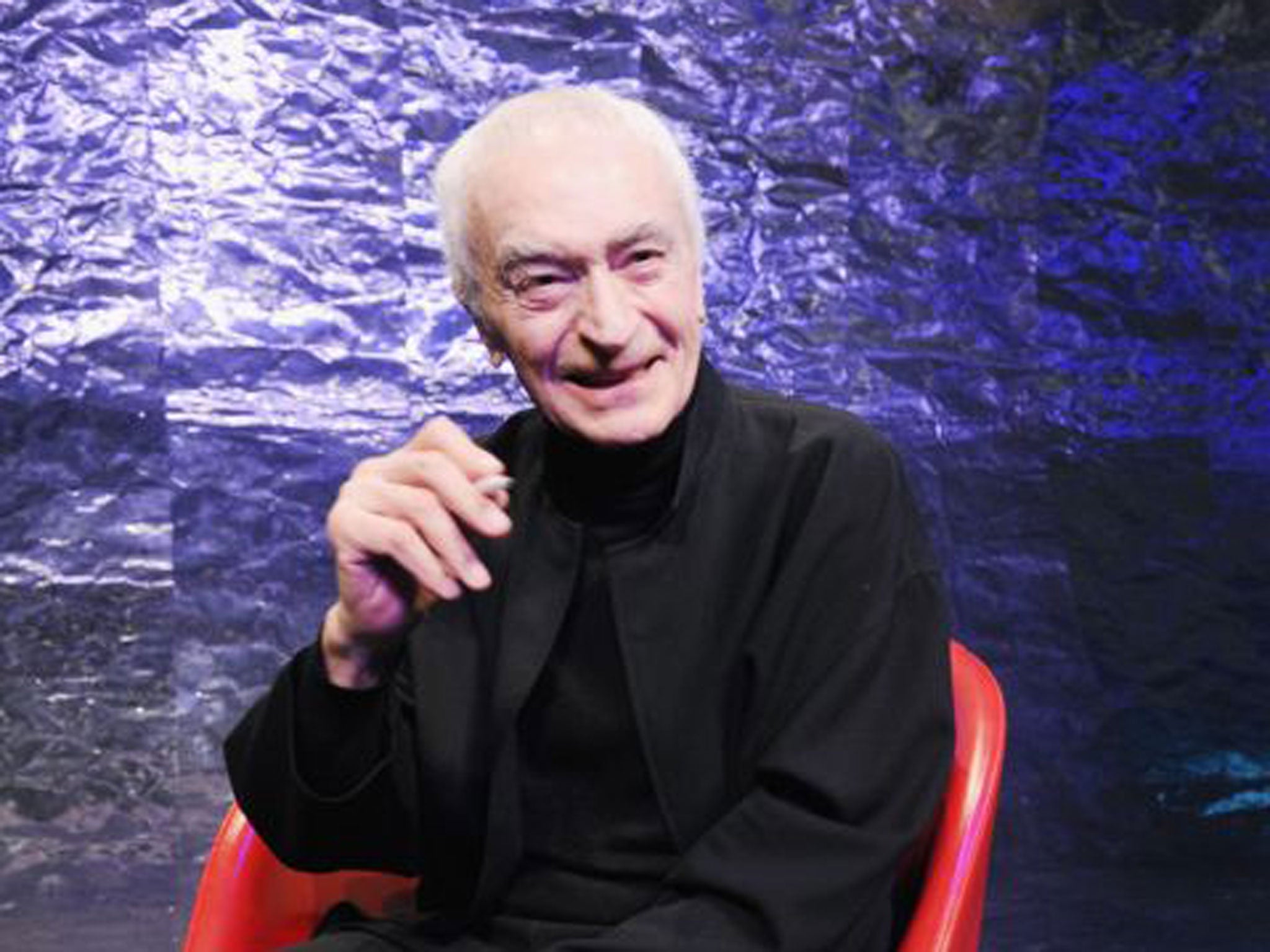Massimo Vignelli: Prolific Italian designer whose elegant, modernist work became a fixture of day-to-day life in the US

Your support helps us to tell the story
From reproductive rights to climate change to Big Tech, The Independent is on the ground when the story is developing. Whether it's investigating the financials of Elon Musk's pro-Trump PAC or producing our latest documentary, 'The A Word', which shines a light on the American women fighting for reproductive rights, we know how important it is to parse out the facts from the messaging.
At such a critical moment in US history, we need reporters on the ground. Your donation allows us to keep sending journalists to speak to both sides of the story.
The Independent is trusted by Americans across the entire political spectrum. And unlike many other quality news outlets, we choose not to lock Americans out of our reporting and analysis with paywalls. We believe quality journalism should be available to everyone, paid for by those who can afford it.
Your support makes all the difference.Massimo Vignelli was an Italian-born designer whose elegantly simple subway signs, business logos, shopping bags, books, furniture and dishware became reference points of daily life and touchstones in modern design.
Vignelli, trained largely in Milan, went to the US in the 1960s with his wife, Lella, and together they formed one of the most celebrated design partnerships of the postwar era. David Lasker, a design authority, once observed that "practically everyone in the Western world, at some time of the day, interacts with Vignelli's handiwork."
That handiwork, renowned for its combination of beauty and utility, included the red, white and blue logo of American Airlines, Bloomingdale's Big Brown Bag and the gilded covers of Fodor's travel books.
Perhaps most notably, he helped lead the design of a short-lived schematic map of the New York City subway system. Introduced in 1972, the subway map unknotted and colour-coded the mess of tracks and simplified their routes in straight lines and clean angles. It was replaced in 1979, however, after complaints that it distorted the city's above-ground geography.
Although controversial as a piece of cartography (Vignelli opted not to depict parks in green and water in blue), the map was enshrined in the collection of the city's Museum of Modern Art and continues to be admired as an object of modernist design.
The New York subway map was not Vignelli's only venture into the bowels of urban underground transportation. In the late 1960s, he proposed the towering pylons that became the principal signage medium for the Washington area's mass-transit system. He initially encountered resistance to his design of the pylons, which were to be planted outside station entrances and along platforms and to identify stops in vertical text. "Are you worried about stiff necks?" one official asked him at the time. But Vignelli's ideas ultimately prevailed.
Vignelli's works were high on style and low on clutter. The Vignelli-designed Handkerchief chair – so named for the seat's resemblance to a billowing hankie – became ubiquitous in public areas. The chair is "stackable, cleanable, virtually indestructible and gorgeous in a minimalist way," Washington Post design critic Linda Hales wrote after studying specimens at Reagan National Airport. Its proportions, she said, "are gracious enough to accommodate all sizes, the material just springy enough, the curves in all the right places to make waiting as bearable as possible."
Vignelli argued the centrality of function – rather than fashion – in design. He once created a line of high-rimmed dishes that could be attractively stacked to conceal leftovers as diners moved from one course to the next.
"We despise the culture of obsolescence, the culture of waste, the cult of the ephemeral," reads a design manifesto titled "The Vignelli Canon". "We detest the demand of temporary solutions, the waste of energies and capital for the sake of novelty. We are for a Design that lasts, that responds to people's needs and to people's wants."
Massimo Vignelli was born on 10 January 1931, in Milan, where as a young man he worked as a draftsman and studied architecture. He studied at the Brera academy of fine arts and the Polytechnic University in Milan, as well as at the University of Venice, before settling in the US. He worked in the early years of his career with the noted design company Unimark International, before opening a firm with Lella Valle, whom he married in 1957 and whom he credited as his chief collaborator.
Vignelli did design work over the years for Gillette personal-care products, Ford Motor, Xerox and IBM. One client he was not able to lure, he said, was the Vatican. Vignelli once quipped that he would have told the pope: "Your holiness. The logo is okay, but everything else has to go."
Vignelli lectured widely on design and at times expressed his impatience with what he regarded as rampant mediocrity in the field. "There are too many people with no education in graphic design. And because they have access to computers, there's no end to what they create – signage, newsletters and so forth," he once told the St. Louis Post-Dispatch. "It's pollution! They have no idea whatsoever about the dignity of type. If they were pharmaceuticals companies, we'd all be poisoned. But we are poisoned anyhow, visually."
Emily Langer
Massimo Vignelli, designer: born Milan 10 January 1931; married 1957 Lella Valle (one son, one daughter); died New York City 27 May 2014.
© The Washington Post
Join our commenting forum
Join thought-provoking conversations, follow other Independent readers and see their replies
Comments